Thousands upon thousands of olive trees stretch as far as the eye can see between the Gerania Mountains and Mount Pateras, which is an extension of Mount Parnitha. Though not generally known, the largest surviving ancient olive grove in Attica is located in Megara, specifically in the Kapsalos area through which we are currently passing.
Elias Peggos, an agronomist who has been systematically studying the region’s olive trees for the past decade, stops at appropriate points to show us some of the most impressive ones. These olive trees are millennia old, with trunks like elaborate sculptures. In certain instances, we even count up to five trunks surrounding the space occupied centuries ago by the tree’s original trunk. In others, the tree’s trunk takes on the shape of an arch or coils with the distinctive charm that olive trees develop over the course of centuries.
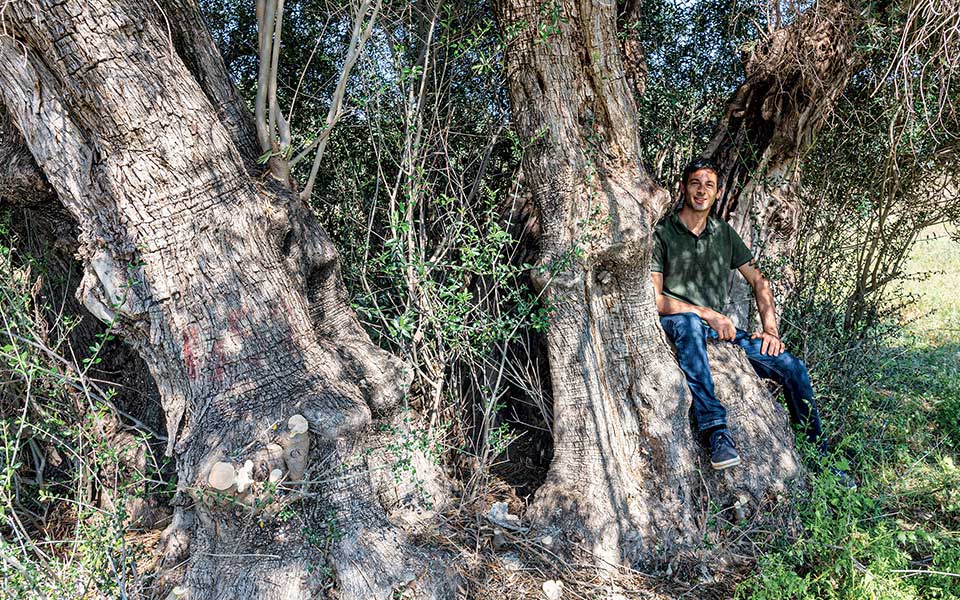
© Perikles Merakos
Elias has documented approximately 100 ancient olive trees in Megara and thoroughly researched their history and connection to the land. He shows me two trees dozens of meters away and asks me to tell which one belongs to the Black Trees variety. This is an ancient olive species that thrives in Megara; its darker foliage distinguishes it from the Megaritic, the primary local variety. I’m scanning the horizon to see if I can spot any more Black Trees, and I’m impressed by their spread. This visibility is enhanced by the trees’ sparse planting, which, as Elias explains, is due to a law that was enacted by Athenian lawmaker Solon (c. 630-560 BC), requiring nine-meter gaps between their trunks.
This olive grove bears the imprints of even more recent historical events. When I ask Elias about the numbers on the trunks of most olive trees, he explains that they refer to the owners. These very small properties emerged as each family made sure to distribute its wealth in such a way that all members received trees in the most fertile parts of the grove. Since ancient times, the area has received little rainfall, making cultivation difficult. Another unique feature of Megara that complements this picture is the original irrigation system built by Eupalinos.
This is said to have been the first major project undertaken by the ancient engineer from Megara, and the city relied on it for water until the 1960s. It was made up of a network of stone conduits buried a few meters underground. Rainwater was filtered through natural rocks before flowing through a wide network of pipes into the city.
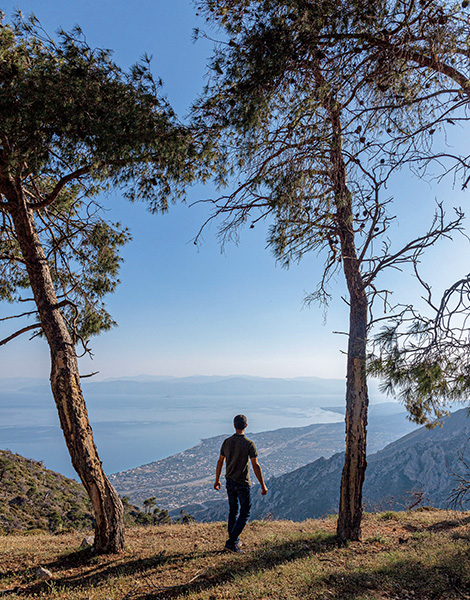
© Perikles Merakos
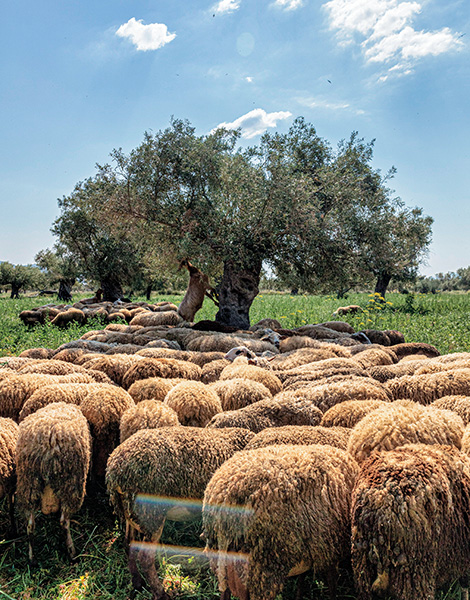
© Perikles Merakos
We exit the olive grove and come across a plot of land sown with dill. I look at Elias in amazement, and he explains that some growers plant other species alongside the olive trees. Indeed, Megara was well-known in antiquity for its onion and garlic production. Even though he is professionally involved in the cultivation of his family’s crops, he remains committed to protecting and promoting Attica’s most important ancient olive grove.
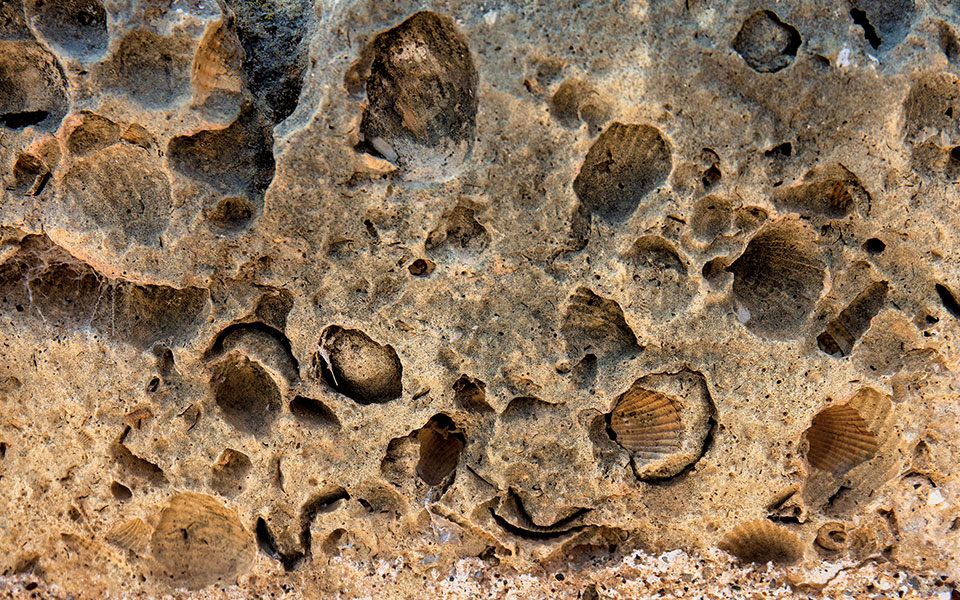
© Perikles Merakos
The seashell stone
Another surprise awaits visitors in Megara’s olive grove: seven Byzantine churches hidden among the trees. It is thought that at some point in their history, possibly following one of the region’s powerful earthquakes, the people of Megara moved their city to this location. The beautiful Byzantine churches, such as the Church of Christos (Christ) and the Church of Aghios Athanasios, are all that remains from that settlement today. Exploring their exterior, you notice that the stone used to build them bears numerous seashell imprints. The seashell stone, as it is known, was abundant in Megara, a region that was below sea level millennia ago.
The Byzantine church of Aghios Georgios and the ancient olive grove provide one of the most impressive examples of the “dialogue” between humans and the elements of nature: most of the church’s walls have collapsed, allowing us to see the altar with its marble columns right next to the ancient olive trees. The surrounding area is known as Anapnoes (Breaths), possibly due to the abundance of wet wells from Eupalinos’ drainage system in this location.
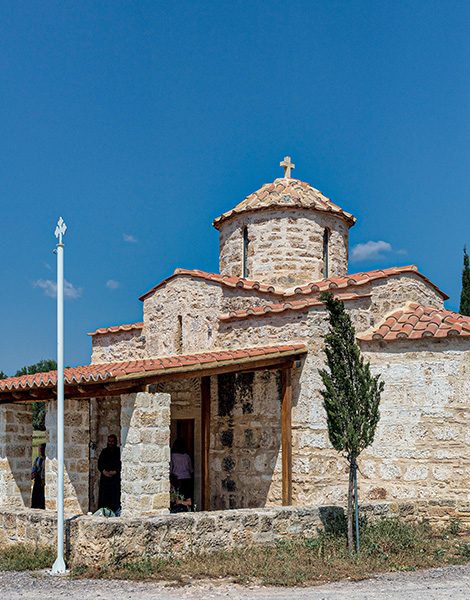
© Perikles Merakos
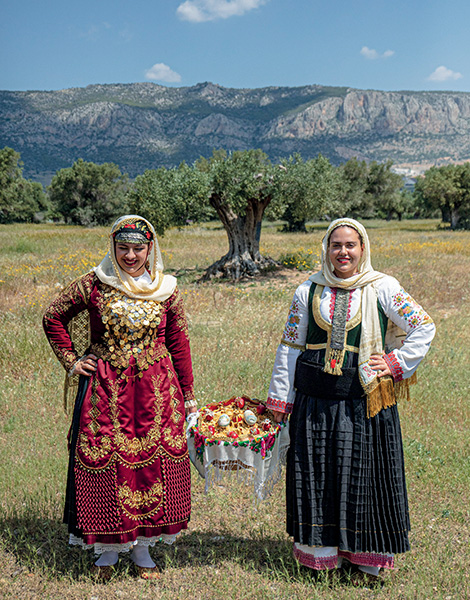
© Perikles Merakos
The vineyards that “guard” the olive trees
In addition to olive trees, the people of Megara used to leave their children vineyards. This “inheritance” can be enjoyed by anyone who travels to the Gerania Mountains. Christos Koulouriotis explains that the traditional varieties grown in the area are Savvatiano, Roditis, and Mouchtaro. He produces mild intervention wines at his small winery, The Knack Project.
We climb into a four-wheel drive and head up the dirt road towards the area of Sora, where Christos’s most mountainous vineyard is located. The view from 630 meters above sea level is spectacular, extending as far as Aegina and Diaporia.
Christos asks me if I’ve ever heard the term “katourigia” while strolling through the vineyards, which are brimming with new growth. It refers to the layering technique, in which a viticulturist sinks a shoot under the soil and allows it to emerge elsewhere, resulting in the formation of new roots. The extreme temperature variation between day and night in this location, one of Attica’s most mountainous vineyard areas, aids in the production of high-quality wine.
Descending towards Mourtiza at 330 meters, the landscape changes dramatically every few kilometers, from pine trees and rocky peaks to gentle, lush slopes with fruit trees and abundant vineyards. Along the way, we pass many half-collapsed stone farmhouses, where Megarians once had their family wine presses.
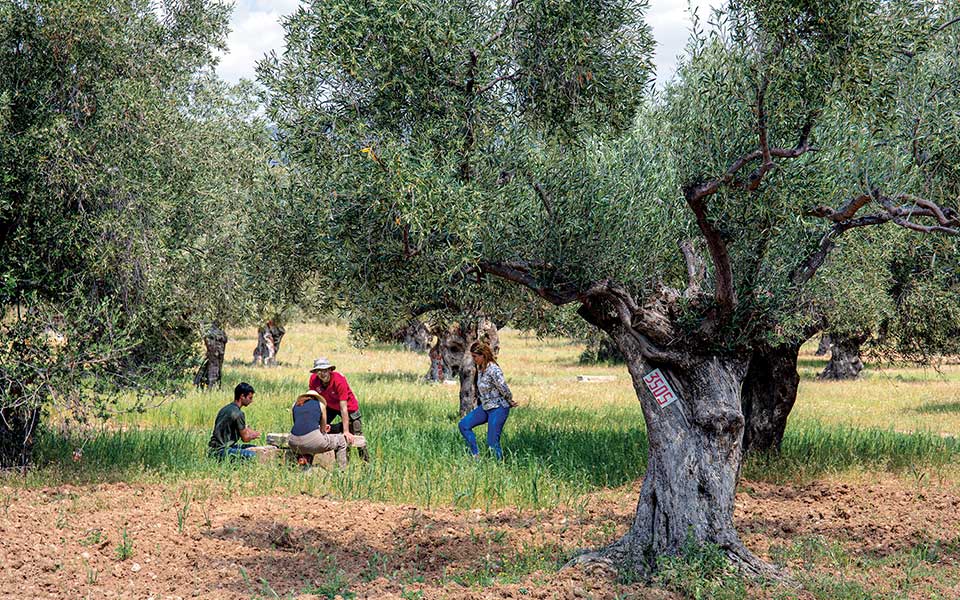
© Perikles Merakos
To visit the Byzantine churches of Megara’s ancient olive grove, begin at Exo Vryssi Square and head north on Aghias Varvaras Street. Three blocks up, at the intersection with Archbishop Christodoulos Street, there is a section of Eupalinos’ ancient water system, as well as a plaque explaining its purpose. Return to Aghias Varvaras Street and follow the signs to the Byzantine churches of Christos (Christ), Aghios Athanasios, and Aghios Georgios.
The Knack Project winery can be visited by appointment (Tel. (+30) 694.461.7434); in Gerania, you can also find the Evharis Estate (Tel. (+30) 22960.903.46).
This article was previously published in Greek at kathimerini.gr.












